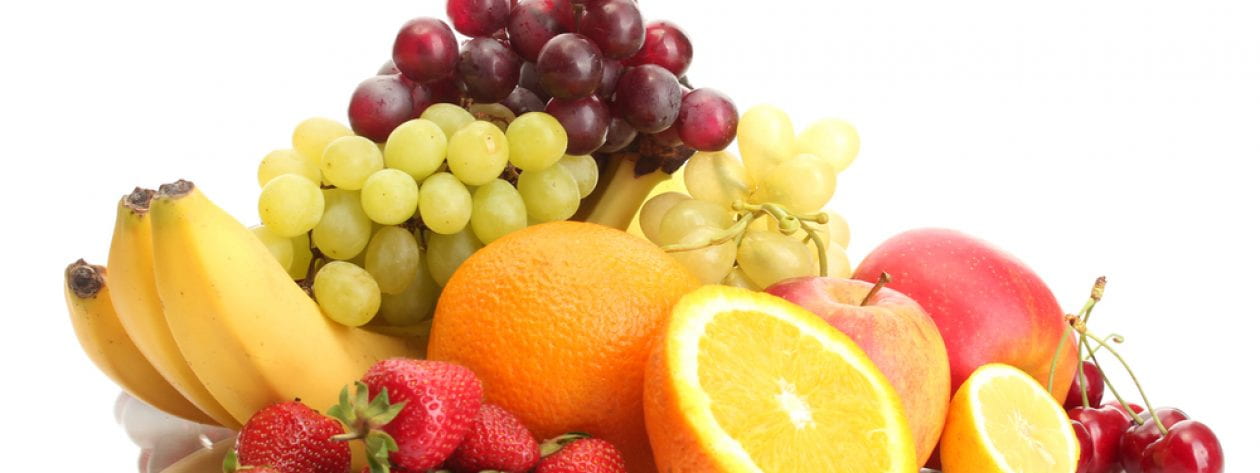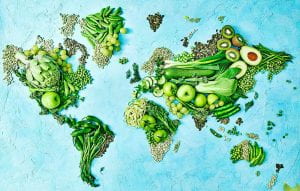Tired of your typical day-to-day healthy meals, but want to avoid all the calories, sodium, and fat that fast food places have to offer? Are you willing to try something new? You can always grab something at one of the many restaurants downtown! Downtown State College offers some great healthy options that can cater to everyone’s taste buds, and will give you a break from your typical meals.
BONUS: Many establishments accept LionCash!
Keep reading for a few of our suggestions:
Playa Bowls
Playa Bowls is located on E. Calder Way and is known for having fruit bowls and smoothies (and other bowls such as oatmeal and poke). What makes this place a healthy option downtown is the variety of fruits (bananas, pineapple, kiwi, berries), bases (acai, kale, pitaya, coconut, green, chia, and banana) and healthy toppings (peanut butter, granola, nuts, seeds, coconut) that are in their fruit bowls and smoothies. These fruit bowls provide antioxidants, vitamins, minerals, fiber, protein, and healthy fats. Fruit contains natural sugars and fiber and is a good source of carbohydrates, which provides energy to fuel your body and give you a natural boost at any time of the day. They’re also rich in antioxidants (especially the berries) that help protect your cells from harm. Why not try a tasty way to get all those vitamins and minerals in for the day?
- Recommended Healthy Meal: Oh Mega Chia Bowl
- Contains: granola, banana, blueberry, hemp seeds, agave nectar
- Provides: 440 calories, 54 grams of carbs, 11 grams of fiber, 24 grams of sugar, 11 grams of protein
- Tip: Ask for less granola and and more fruit! Or, for more protein, ask for some peanut butter or nuts.
Fiddlehead
Fiddlehead is located on W. College Ave and offers a variety of salads, wraps, grain bowls, and soups. For the salads, there are a variety of different leafy greens, which include romaine iceberg mix, baby spinach, kale, and spring mix. Leafy green vegetables are packed with vitamins, minerals, and fiber while being low in calories. For example, kale is one of the most nutrient-dense vegetables, which provides vitamins, minerals, and antioxidants that help reduce the risk of diseases. The leafy greens also come with many healthy toppings and dressing. Try to go for vinegar or oil-based dressings and top with nuts to help you get in those healthy fats for the day!
- Recommended Healthy Meal: Mediterranean Grain Bowl
- Contains: quinoa, kalamata olives, kale, cucumbers, tomatoes, feta, falafel, Fiddlehead vinaigrette
- Tip: Ask for your dressing on the side. This way, you have control over how much goes on the salad!
Tadashi
Tadashi has two locations in State College, one on W. College Ave and the other on S. Atherton St. Tadashi offers a variety of Japanese dishes such as sushi, sashimi, udon, and donburi. Many of the menu options include many different types of fish, which provide high amounts of omega-3 fatty acids and protein while being low in calories. An omega-3 fatty acid is good for your heart and may event give you that extra brain boost for that exam you’ve been studying for!
- Recommended Healthy Meal: Shichimi Salmon Roll
- Contains: spicy salmon, Kani, avocado, topped seared mayo salmon, mango salsa, eel sauce, scallions
- Tip: Go with friends and sample a variety of items instead of eating the entire meal yourself.
Although these restaurants offer healthier options than most, try to avoid dining out on a regular basis. Even though you may choose the healthy option on the menu, eating out on a regular basis can increase your calorie, sugar, or fat intake, without you even knowing. Those portion sizes and ingredients can be deceiving!
Learning how to cook your own healthy meals allows you to have control over exactly what goes into the food you’re eating. You could even get fancy and try to re-create some of the items on the menu at your favorite restaurant. By buying your own ingredients you can make them healthier and save money over time!
By: Michelle Tang








